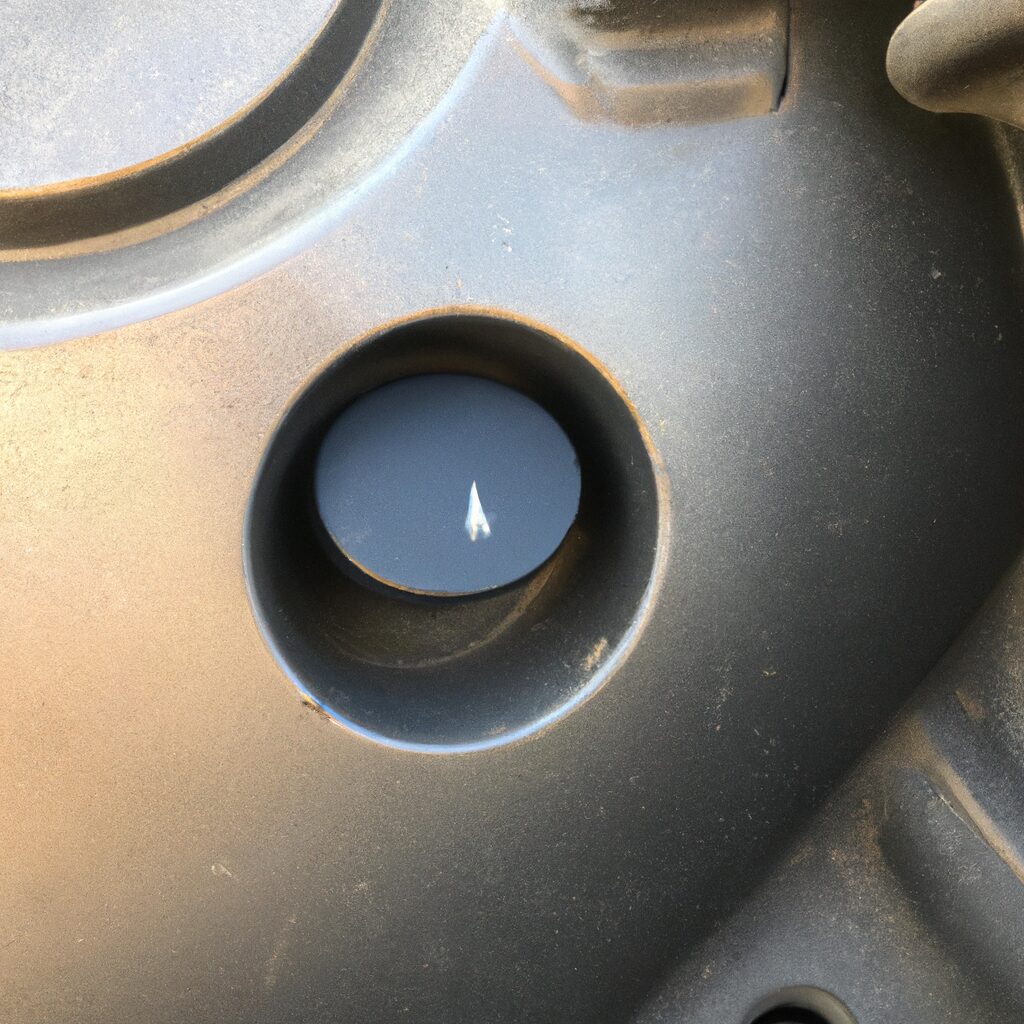oil cap wont come off
Introduction
If you’ve ever tried to change the oil in your car, you know that one of the most frustrating parts of the process is getting the oil cap off. It can be difficult to remove, and if you don’t have the right tools, it can be nearly impossible. Fortunately, there are a few tricks you can use to get the oil cap off if it won’t come off on its own. In this article, we’ll discuss some of the most effective methods for removing a stubborn oil cap.
How to Remove a Stuck Oil Cap: Tips and Tricks
Removing a stuck oil cap can be a frustrating experience. Fortunately, there are a few tips and tricks that can help you get the job done.
First, try to loosen the cap by hand. If it is stuck, use a pair of pliers to grip the cap and twist it counterclockwise. If the cap is still stuck, try using a rubber mallet to gently tap the cap in a counterclockwise direction.
If the cap is still stuck, you may need to use a lubricant. Apply a small amount of lubricant, such as WD-40, to the cap and let it sit for a few minutes. This will help to loosen the cap and make it easier to remove.
If the cap is still stuck, you may need to use a screwdriver. Insert the screwdriver into the cap and twist it counterclockwise. Be careful not to damage the cap or the threads.
Finally, if all else fails, you may need to use a pair of vice grips. Place the vice grips on the cap and twist it counterclockwise. Be sure to use caution when using this method, as it can damage the cap and the threads.
Removing a stuck oil cap can be a difficult task, but with the right tools and techniques, it can be done. With a little patience and the right approach, you can get the job done and get your car back on the road.
Common Causes of a Stuck Oil Cap and How to Fix Them
A stuck oil cap is a common problem that can occur in many vehicles. The oil cap is a critical component of the engine, as it helps to keep the oil in the engine and prevent it from leaking out. If the oil cap becomes stuck, it can cause a variety of issues, including decreased engine performance and increased oil consumption. Fortunately, there are a few steps you can take to fix a stuck oil cap.
The most common cause of a stuck oil cap is a buildup of dirt and debris. Over time, dirt and debris can accumulate around the oil cap, making it difficult to remove. To fix this issue, you should first clean the area around the oil cap. Use a soft cloth and some mild soap and water to remove any dirt or debris that may be present. Once the area is clean, you should be able to remove the oil cap with ease.
Another common cause of a stuck oil cap is a buildup of oil residue. This can occur if the oil cap has not been removed and replaced in a while. To fix this issue, you should first remove the oil cap and clean the area around it. Use a soft cloth and some mild soap and water to remove any oil residue that may be present. Once the area is clean, you should be able to remove the oil cap with ease.
Finally, a stuck oil cap can also be caused by a faulty seal. If the seal around the oil cap is damaged or worn, it can cause the oil cap to become stuck. To fix this issue, you should replace the seal with a new one. This can be done by purchasing a new seal from an auto parts store and installing it yourself.
By following these steps, you should be able to fix a stuck oil cap and get your vehicle running smoothly again. If you are still having trouble removing the oil cap, you may need to take your vehicle to a professional mechanic for further assistance.
DIY Solutions for a Stuck Oil Cap
If you are having difficulty removing the oil cap from your vehicle, there are a few DIY solutions you can try.
First, you can try using a pair of pliers. Make sure to use a pair of pliers with rubber-coated handles to avoid damaging the cap. Place the pliers around the cap and gently twist the cap counterclockwise. If the cap is still stuck, you can try using a bit of lubricant. Apply a small amount of lubricant to the cap and let it sit for a few minutes. This should help loosen the cap.
If the cap is still stuck, you can try using a rubber mallet. Place the mallet on the cap and gently tap it counterclockwise. This should help loosen the cap.
Finally, if the cap is still stuck, you can try using a screwdriver. Place the screwdriver on the cap and gently twist it counterclockwise. This should help loosen the cap.
If none of these solutions work, you may need to take your vehicle to a mechanic for further assistance.
What to Do When Your Oil Cap Won’t Come Off
If your oil cap won’t come off, there are a few steps you can take to try and remove it.
First, make sure the cap is actually stuck. If the cap is loose but won’t come off, it may be because the threads are damaged or the cap is cross-threaded. If this is the case, you may need to replace the cap.
If the cap is stuck, you can try using a pair of pliers to loosen it. Make sure to use a pair of pliers with rubber-coated handles to avoid damaging the cap. Gently grip the cap and twist it counterclockwise. If the cap still won’t come off, you can try using a lubricant such as WD-40 or a penetrating oil. Spray the lubricant around the cap and let it sit for a few minutes before trying to remove it again.
If the cap still won’t come off, you may need to take your vehicle to a mechanic. They will be able to use specialized tools to remove the cap without damaging it.
Following these steps should help you remove a stuck oil cap. However, if the cap is damaged or cross-threaded, you may need to replace it.
How to Avoid a Stuck Oil Cap in the Future
To avoid a stuck oil cap in the future, it is important to take the necessary steps to ensure that the cap is properly maintained. Here are some tips to help you keep your oil cap in good condition:
1. Make sure to check the oil cap regularly. Inspect the cap for any signs of wear or damage, such as cracks or dents. If any of these are present, replace the cap immediately.
2. Clean the oil cap regularly. Use a soft cloth and a mild detergent to remove any dirt or debris that may have accumulated on the cap.
3. Lubricate the oil cap. Use a lubricant such as WD-40 to ensure that the cap is able to move freely and does not become stuck.
4. Tighten the oil cap securely. Make sure that the cap is tightened securely to prevent it from becoming loose and stuck.
By following these tips, you can help ensure that your oil cap remains in good condition and does not become stuck.
The Benefits of Regularly Replacing Your Oil Cap
Regularly replacing your oil cap is an important part of maintaining your vehicle. The oil cap is a small but essential component of your engine, and it plays a vital role in keeping your engine running smoothly. Replacing your oil cap regularly can help to ensure that your engine is running at its best and can help to extend the life of your vehicle.
The oil cap is responsible for keeping the oil in your engine from leaking out. Over time, the oil cap can become worn or damaged, which can lead to oil leaks. If the oil cap is not replaced, the oil can leak out of the engine, leading to a decrease in engine performance and an increase in engine wear. Replacing the oil cap regularly can help to prevent this from happening.
In addition to preventing oil leaks, regularly replacing the oil cap can also help to keep your engine running more efficiently. The oil cap helps to regulate the pressure in the engine, which can help to improve fuel economy and reduce emissions. Replacing the oil cap regularly can help to ensure that the pressure in the engine is at the optimal level, which can help to improve the performance of your vehicle.
Finally, regularly replacing the oil cap can help to extend the life of your vehicle. The oil cap helps to keep dirt and debris out of the engine, which can help to reduce wear and tear on the engine components. Replacing the oil cap regularly can help to ensure that the engine is kept clean and free of debris, which can help to extend the life of your vehicle.
In conclusion, regularly replacing your oil cap is an important part of maintaining your vehicle. Replacing the oil cap regularly can help to prevent oil leaks, improve engine performance, and extend the life of your vehicle. Taking the time to replace your oil cap regularly can help to ensure that your vehicle is running at its best and can help to keep it running for years to come.
How to Tell If Your Oil Cap Is Stuck or Damaged
If your oil cap is stuck or damaged, it is important to identify the issue in order to take the necessary steps to fix it. Here are some tips to help you determine if your oil cap is stuck or damaged.
First, check the condition of the oil cap. If it is cracked, warped, or otherwise damaged, it is likely that it is damaged and needs to be replaced. If the oil cap is stuck, it may be due to a buildup of dirt or debris.
Second, try to remove the oil cap. If it is stuck, you may need to use a pair of pliers or a screwdriver to loosen it. If the cap is damaged, it may be difficult to remove.
Third, inspect the threads on the oil cap. If the threads are worn or damaged, it is likely that the cap is damaged and needs to be replaced.
Finally, if the oil cap is stuck or damaged, it is important to replace it as soon as possible. A damaged or stuck oil cap can lead to oil leaks and other engine problems. It is important to take the necessary steps to ensure that your engine is running properly.
The Best Tools for Removing a Stuck Oil Cap
Removing a stuck oil cap can be a frustrating experience. Fortunately, there are a few tools that can help make the process easier. Here are some of the best tools for removing a stuck oil cap:
1. Pliers: Pliers are a great tool for removing a stuck oil cap. They provide a strong grip and can be used to twist and pull the cap off.
2. Screwdriver: A screwdriver can be used to pry the cap off. It is important to use a flathead screwdriver that is the same size as the cap.
3. Hammer: A hammer can be used to gently tap the cap off. It is important to use a rubber mallet or a piece of wood to avoid damaging the cap.
4. Heat Gun: A heat gun can be used to heat the cap and loosen the seal. It is important to use caution when using a heat gun and to avoid getting the oil too hot.
5. WD-40: WD-40 is a lubricant that can be used to loosen the cap. It is important to use caution when using WD-40 and to avoid getting it on the oil.
Using the right tool can make the process of removing a stuck oil cap much easier. It is important to use caution when using any of these tools and to avoid damaging the cap or the oil.
Q&A
1. What type of oil cap is it?
2. Is the oil cap threaded or press-fit?
3. Is the oil cap rusted or corroded?
4. Is the oil cap stuck due to over-tightening?
5. Is the oil cap stuck due to a build-up of dirt or debris?
6. Is the oil cap stuck due to a build-up of oil or grease?
7. Are there any other obstructions preventing the oil cap from coming off?
8. Have you tried using a lubricant to help loosen the oil cap?
Conclusion
In conclusion, if your oil cap won’t come off, it is likely due to a buildup of dirt and grime that has accumulated over time. To fix this issue, you can try using a lubricant such as WD-40 or a penetrating oil to help loosen the cap. If this does not work, you may need to use a pair of pliers or a wrench to help loosen the cap. If all else fails, you may need to take your vehicle to a mechanic to have the cap removed.



